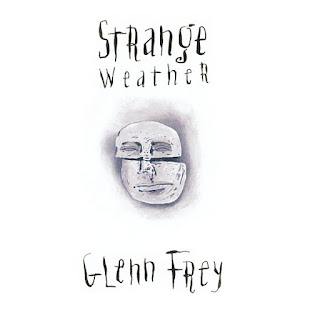"Bursting Out" compiles the entire career of Jethro Tull at the time of its publication with a live that can only be described as a masterpiece. By then the band had one of their best lineups (Anderson-Barre-Evan-Barlow-Palmer-Glascock), and at their best and playing the best of their entire repertoire for an hour and a half.
Jethro Tull took a long time to record an entire album live, it took 12 studio albums for them to decide to do it, and by the time they decided the band showed in Bursting Out that good musicians are imperishable and incorruptible, and that they are capable of giving to the public a good dose of good material with a high quality in all aspects.
With an established line-up, more like a group of minstrels than a rock band, composed of guitarist Martin Lancelot Barre, Anderson's right-hand man; drummer Barriemore Barlow - note that even the names sound like an "Excalibur" type movie -; keyboardist John Evan, who sported the manes of a classical composer, arranger David Palmer, and late bassist John Glascock, Jethro Tull went on tour to present “Heavy Horses” and released “Bursting Out” in 1978, the obligatory live stuntman. of every band that boasts.
With a spectacular staging, this gang of adorable buffoons, excellent musicians, seemed to go out to have fun every night on the stage, wearing their clothes, clear foreheads, beards and peddlers' hats, pulling accordions, piccolos, tambourines, everything. necessary to stage those songs composed on Ian Anderson's farm.
Only the entrance to this “Bursting Out”, where an accredited subject like Claude Nobs uses up to three languages to introduce the group - a mocking rant in English, French and Italian, nothing to do with the solemnity of Churchill's speech at the beginning of “ Live After Death ”- gives an idea of the great guignol that Jethro Tull were able to turn their live shows into.
Ninety long minutes of show, with maestro Ian Anderson displaying his pyrotechnics: Incendiary flute solos, wonderful acoustic parts, a repertoire for all tastes, from the blues of the first period to medieval folk in which the genius seems to be more at ease, going through the rocky days of “Aqualung” and “Locomotive Breath”, along with moments of almost orchestral instrumentation and virtuosity content.
In the opening songs, the new "No Lullaby" and the old "Sweet Dream" - one of his first hit singles - dominate the electric moments. They start the show with force. But the distinction comes with the lyricism of the following: "Skating Away from the Thin Ice of the New Day", "Jack in the Green" and "One Brown Mouse", light, not soft, folk tunes that the band recreates with the mastery of the one who knows what is at hand.
“A New Day Yesterday”, a bluesy piece, offers the opportunity to enjoy the purity of Martin Barre's electric picks. It is followed by Anderson's improvised flute solo, interspersed with grunts and neoclassical fragments such as the piece “Bouree”, and “Songs from the Wood”, sung almost a cappella by the six troubadours.
“Thick as a Brick”, one of his masterpieces, which in the studio took up an entire Lp of 45 minutes, is here reduced to a glorious quarter of an hour. It contains an intro of Anderson singing solo on his acoustic guitar, accelerons with solo flute, electric guitar and keyboard parts, and a cathartic final phase with the entire band in unison.
The second volume opens with the simple “Hunting Girl”, with another beautiful folk tune. As magnificent is the vocal line of the classic “Too Old to r´n´r, Too Young to Die”, and its reckless final part, reminiscent of the music of a Merry-go-round.
An instrumental link containing the drum solo, “Conundrum”, and the colossal “Minstrel in The Gallery”, one of his best songs, a mix of the acoustic tones of minstrel Anderson and the plugged fury of Barre's guitar.
For the end the biggest words: The tough “Cross-Eyed Mary”, the superb “Aqualung” and “Locomotive Breath”, their best known songs. The strength and the lyrics of these songs from the early days, full of bad slobber and street provocation, contrast with the recent lyrics of the Anderson farmer. “Aqualung” continues to be overwhelming, with its irresistible contrasts between the soft verses and the enraged ones. Barre's plucking on this song is the best this man has ever recorded. And “Locomotive Breath” continues to close Jethro's shows in 2010, not for nothing is it the perfect rock piece.
Buffoons to the end, they say goodbye with "The Dambusters March", a joyous martial hymn that Anderson takes advantage of to throw huge colored balloons on the audience.















































